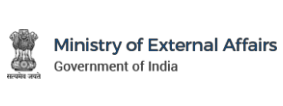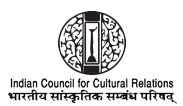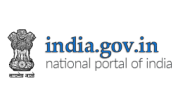Washington, DC
June 29, 2006
The Ministry of Health and Family Welfare of the Republic of India and the Department of Health and Human Services (HHS) of the United States of America, hereinafter referred to as the Participants, signed the original Indo-U.S. Joint Statement on Collaboration in Environmental and Occupational Health, hereinafter referred to as the Collaboration, on May 10 2002, which covered an initial five-year period. Indian and U. S. members of a Joint Working Group meet regularly and guide the efforts of the Collaboration. The various successes of the programs and projects under the Collaboration demonstrate the value of the Collaboration to the Republic of India and the United States of America.
Under the Collaboration, both countries have initiated and contributed substantially to four Indo-U.S. research projects on asbestos-related diseases, arsenic toxicity, biomarkers in environmental health, and silicosis. These projects develop knowledge and skills through project formulation and data collection and facilitate technology transfer through the training of research staff and other exchanges. The Collaboration has resulted in the set up of the Hazardous Substances Emergency Events Surveillance network in Gujarat State. Additionally, for capacity-building and training, the Collaboration has resulted in seven interactive workshops/consultations, on environmental and occupational diseases, children's health, risk assessment from heavy metal exposures, emergency preparedness, water, and sanitation. Participants in the Collaboration held additional workshops on environmental epidemiology and advanced hazardous materials (HAZMAT) life support in India to complement the capabilities of scientists and clinicians there.
The original Joint Statement stipulates that Participants conduct and finance activities under this Collaboration by mutually acceptable terms and arrangements. Participants may develop additional guidelines for future implementation of this initiative, as needed, through mutual consultation. In light of the success of the 2002 Collaboration, the Participants intend to renew the Collaboration under this new Joint Statement as outlined below.
Part One
The Participants intend to promote and develop further cooperation in the fields of environmental and occupational health research, education and training, infrastructure development, and capacity-building on the basis of reciprocity and mutual benefit. The following identifies the principal Government Departments and agencies on both sides:
Government of India Participating Ministries and Agencies:
• Indian Council of Medical Research (nodal agency); and
• Ministry of Health and Family Welfare.
U.S. Government Participating Departments and Agencies:
• U.S. Department of Health and Human Services (HHS)
• HHS Centers for Disease Control and Prevention/Agency for Toxic Substances and Disease Registry (lead agency); and
• HHS National Institutes of Health
In addition to the Government Departments and agencies identified above, there could be other participants in the program, including institutions in the public and private sector, State and local Governments in both countries, and other entities, as approved by the Joint Working Group.
Part Two
The main areas of cooperation are likely to be, but might not be limited to, the following:
•The prevention of illness related to toxic chemicals and hazardous substances;
•The development and use of improved technology for industrial and environmental health;
• The prevention of illness and injury related to hazards at the work place;
•Planning, preparedness, and response for chemical releases and disasters;
• Research into the environmental causes of illnesses, including the assessment of exposure
to, and disposal of industrial and chemical waste materials;
• Research into the relationship of environmental and occupational diseases to genetic,
nutritional, and other related factors;
• The prevention of illness related to air and water pollution;
• The prevention of illness related to limited urban and semi-urban environmental services;
• The public-health effects of urbanization and health promotion in cities and the built environment; and
• Injury prevention and control.
Part Three
Cooperation between the two countries may include, but might not be limited to, the following:
a. Increased collaboration among scientists between the two countries to conduct research and research training related to environmental and occupational health, including public health, basic science, and clinical studies;
b. Information and scientific exchanges;
c. Professional and scientific meetings conducted and facilitated by specialists from both countries;
d. Direct links between appropriate institutions;
e. Increased bilateral cooperation on environmental and occupational health and research at the global level; and
f. Continuing a Joint Working Group (JWG) to develop strategic plans for collaboration and to ensure expedited review and clearances of funded bilateral projects.
Part Four
The Indo-U.S. JWG should meet at least once a year. The JWG is to consist of representatives from each of the Government Departments and agencies, and other individuals, as deemed necessary and appropriate. Each side is to designate an individual to co-chair the JWG, with the names of the co-chairs to be communicated in advance of each meeting. The JWG should do the following:
a. Review program plans and recommend new areas of cooperation, based on recommendations from technical workshops and collaborating scientists ;
b. Recommend measures to both Governments to ensure the program operates smoothly; and
c. Address issues that require joint resolution that Participants cannot address effectively outside of the JWG
Part Five
The Participants intend to undertake all activities pursuant to this understanding in accordance with the laws and regulations of the United States of America and the Republic of India, subject to the availability of personnel, resources, and appropriated funds. The Participants intend to develop steps for implementing this understanding through mutual consultations and concurrence to follow the signing of this Joint Statement.
Part Six
Both Participants acknowledge the importance of the protection of human subjects in any health program. In recognition of this, both the Republic of India and the United States of America have adopted laws and regulations on the protection of human subjects and agree to follow the same.
Part Seven
Both Participants recognize the work carried out under this Joint Statement could produce patentable results, and lead to the publication of scientific findings. The provisions of the Agreement on Science and Technology Cooperation between the Government of the United States of America and the Government of the Republic of India, signed on October 17, 2005, should govern the allocation of such intellectual property, copyright, and patent rights.
Both Participants encourage scientists on both sides to publish, both jointly and as individuals, their findings. In any publication specifically related to work undertaken in areas covered by this Joint Statement, the Participants are to make an appropriate reference to the Joint Statement.
Part Eight
Both Participants recognize work under this Joint Statement can involve numerous exchanges of administrative and scientific personnel throughout each year. Both Participants should provide the necessary clearances (exit permission by the sending country and visa issuance by the receiving country) on a priority basis, subject to their respective laws and regulations.
Part Nine
This Joint Statement is to become effective on the date of expiration of the original Collaboration, and is to remain effective for five years, after which both Participants may renew it by written consent, subject to the availability of funds and other resources.
In witness whereof the undersigned, being duly authorized by their respective Governments, have signed this Joint Statement.
Signed on the 29`h day of June 2006, in Washington, D.C., with two originals in the English language.
FOR THE
MINISTRY OF HEALTH AND FAMILY WELFARE OF THE FOR THE DEPARTMENT OF HEALTH REPUBLIC OF INDIA AND HUMAN SERVICES UNITED STATES OF AMERICA







